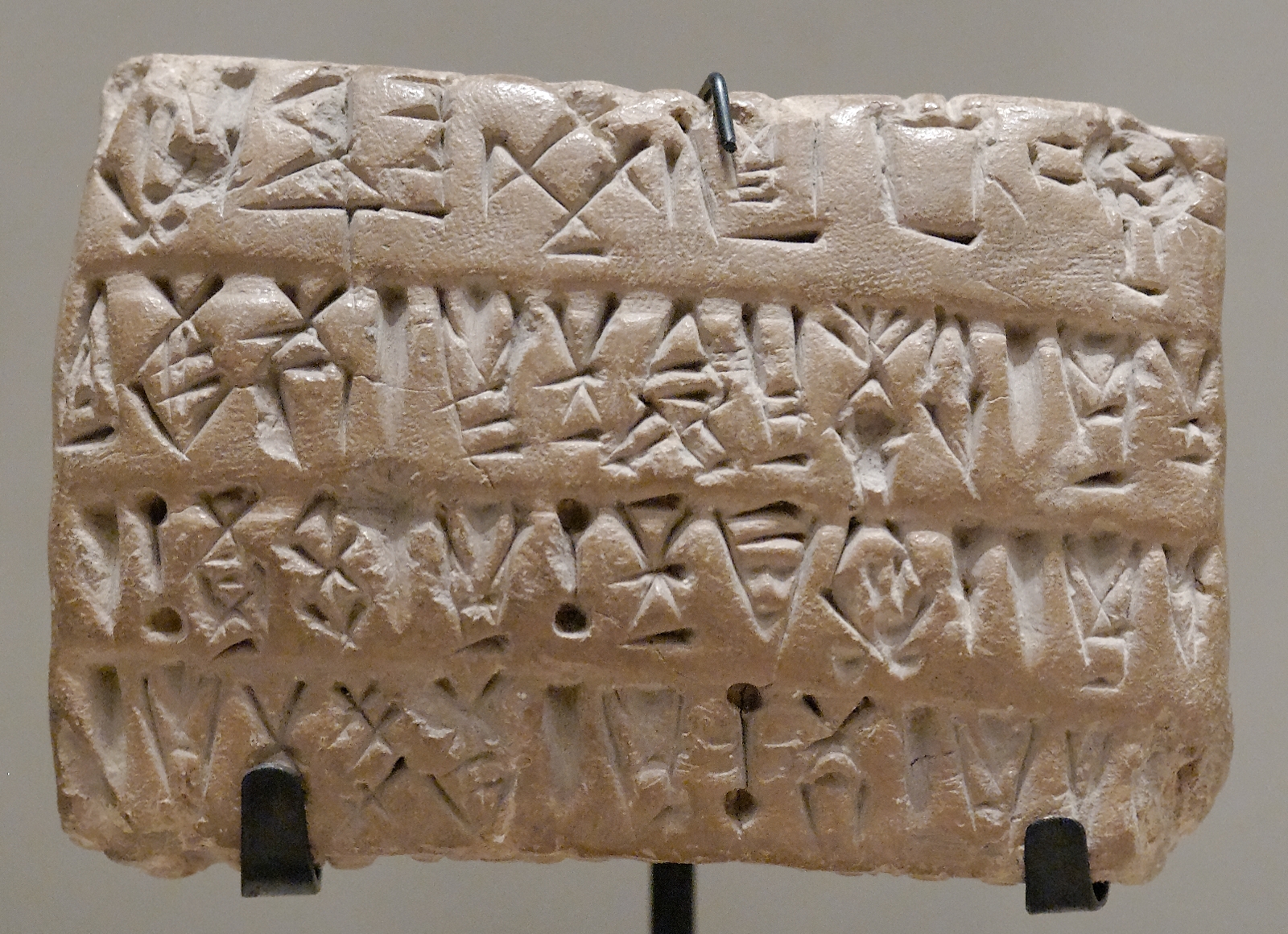The invention of cuneiform: Writing in Sumer
This month we are reading the final chapters of Jean-Jacques Glassner's The invention of cuneiform: Writing in Sumer (2003).
Glassner's work is original in both its style and scope. He opens with a Sumerian-centric account of the invention of writing within its historical and cultural context, as drawn from primary archeological and paleographic evidence. He then moves on to critiquing received ideas about cuneiform's origins, most prominently the Schmandt-Besserat hypothesis that writing evolved from clay tokens. In the concluding chapters he gives provides his own account of the historical-ethnographic setting that gave rise to writing along his theoretical insights on this. This section offers the most scope for discussion so we will be looking at the final two chapters: 'The triumph of writing' and 'A written language?'.
Add your comments below.




Thomas Müller 8 December 2017 (15:45)
Ostentatious asynchronous communication
I don't have too much to say this time, but enjoyed the read, especially the last chapter. A nice point I found in there is how writing presents an opportunity to create ostentatious codes detached from the speaker, thus allowing the same or other individuals to make inferences (and understand the signs comprise a message at all) in a different time or space. This is possible because the mutually shared knowledge that spoken language builds on is substituted by the previously learned meanings of the signs and the rules of their combination.
Piers Kelly 11 December 2017 (15:15)
Reevaluating intuitive ideas
As one who knows precious little about the Sumerian world, Glassner's The invention of cuneiform is a pleasure to read. Glassner does not presuppose any special erudition but at the same time he explores all manner of elevated questions with the clear intent of reformulating our understanding of the world's first writing system.
To this end Glassner takes delight in debunking popular theories and assumptions, both in their fundamentals and their particularities, but the expectation that these will be replaced with convincing alternatives is sometimes left unfulfilled. Instead, his style is to dismiss the strongest version of a hypothesis only to reinstall it in a more attenuated and sceptical form. These reformulations appeal to me since the invention writing proves itself, again and again, to be a slippery fish. From Mesopotamia, to Egypt, China and Mesoamerica the contexts of early literacy are surprisingly diverse. Certain of his arguments are in no way controversial. Eg, his rejection of slow stadialism in favour of a principle of self-conscious discovery (an idea suggested by Childe, Boltz and DeFrancis but which has antecedents in the 18th century).
More interestingly for me are his ideas challenging the presumed transformative effects of literacy: it is poignant that Uruk society goes into decline after the invention of writing. We're not exactly circling back into Jack Goody territory but I do like his concession that "writing permits the creation of previously impossible social actions". Writing is not a "disruptive technology", to use Silicon Valley jargon, and yet it does change our relationship to representation and provide us with a new mechanism for arranging reality, even if this often goes unexploited in practice.
Glassner's disavowal of the Schmand-Besserat hypothesis is well argued and I have no reason to dispute it, but it still leaves wide open other possibilities of a similar kind. For example, the possibility that writing piggy-backs on tally systems is not ruled out by Glassner. And if tallies record substantive objects that are themselves given a graphic representation, then it is only a short step to developing a logography out of which, eventually, a phonographic principle might be discovered via a principle of analogy (of which rebus is just one). Glassner's speculation on divination practices brings this very much to the fore. Here some kind of sequentialism is brought in through back door, whereby pictography and logography are seen as direct mediations of a non-abstract reality, necessarily preceding the introduction of phoneticism and the possibility of signs detaching from their original contexts.